If you’re a tourist in Xi’an, there’s one thing you absolutely have to do. Not necessarily because it’s good fun, but because it’s there. So of course I went to visit the purported 8th Wonder of the World, one of the many things I didn’t get around to when I lived in China.
The Terracotta Army is a collection of sculptures depicting the army of Qin Shi Huang, the first Emperor of China. Discovered by farmers in 1974, they date back to around 200 BC. Now, they are both the subject of study by historians, as well as one of Shaanxi provinces most popular tourist attractions.
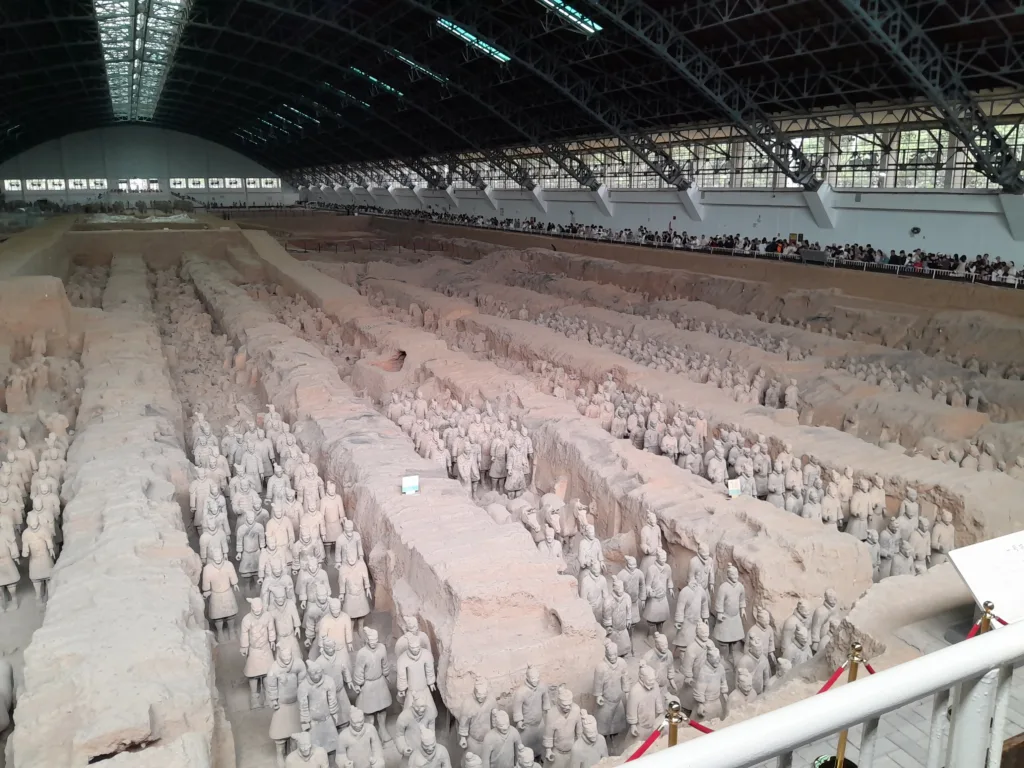
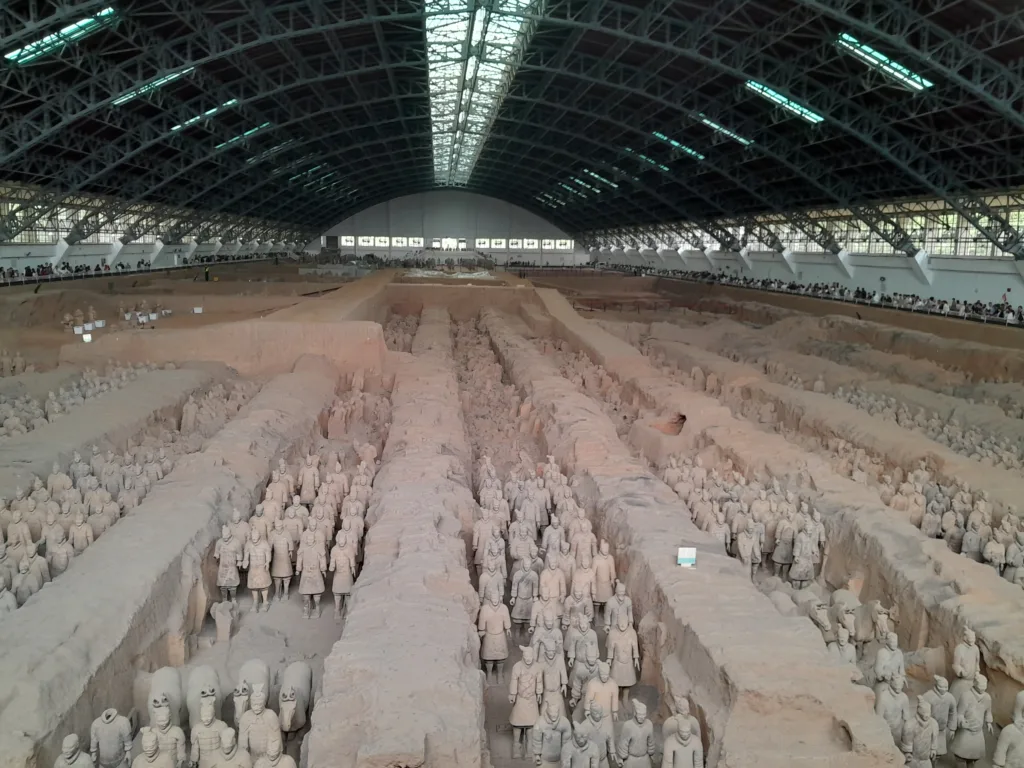
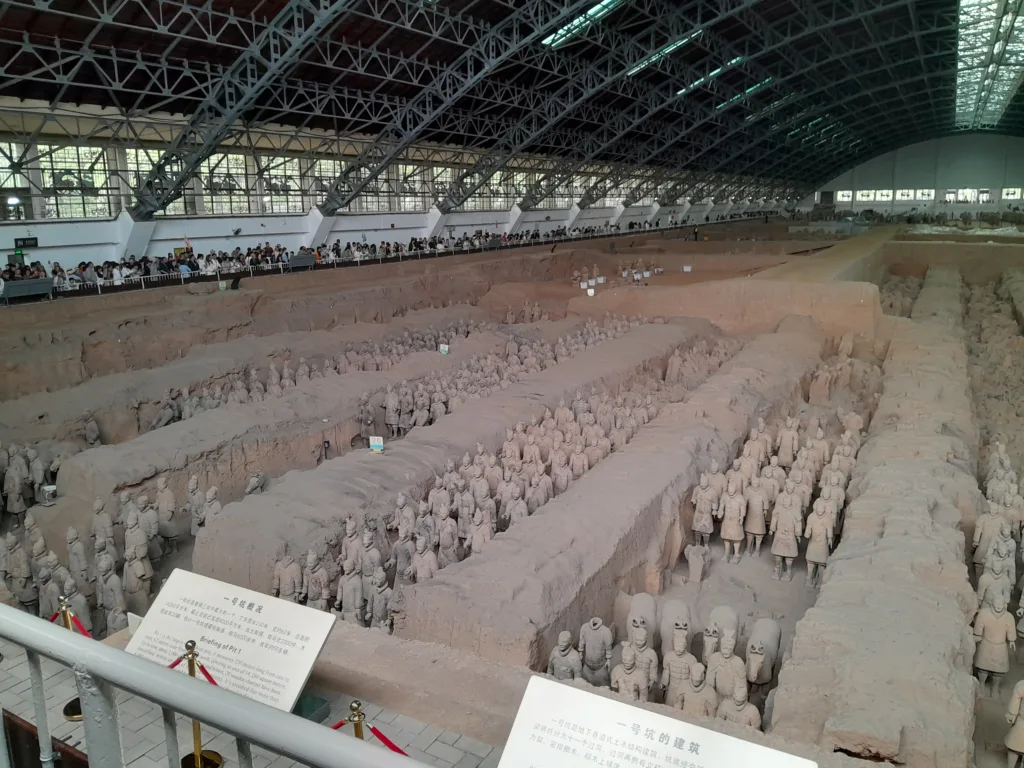
The exhibit is known to be packed to the brim – people mountain, people sea as they say in China. So we purposefully avoided a weekend visit in the hopes of their being a smaller crowd. This paid off, though it didn’t mean the place was completely void of large crowds of tourists.
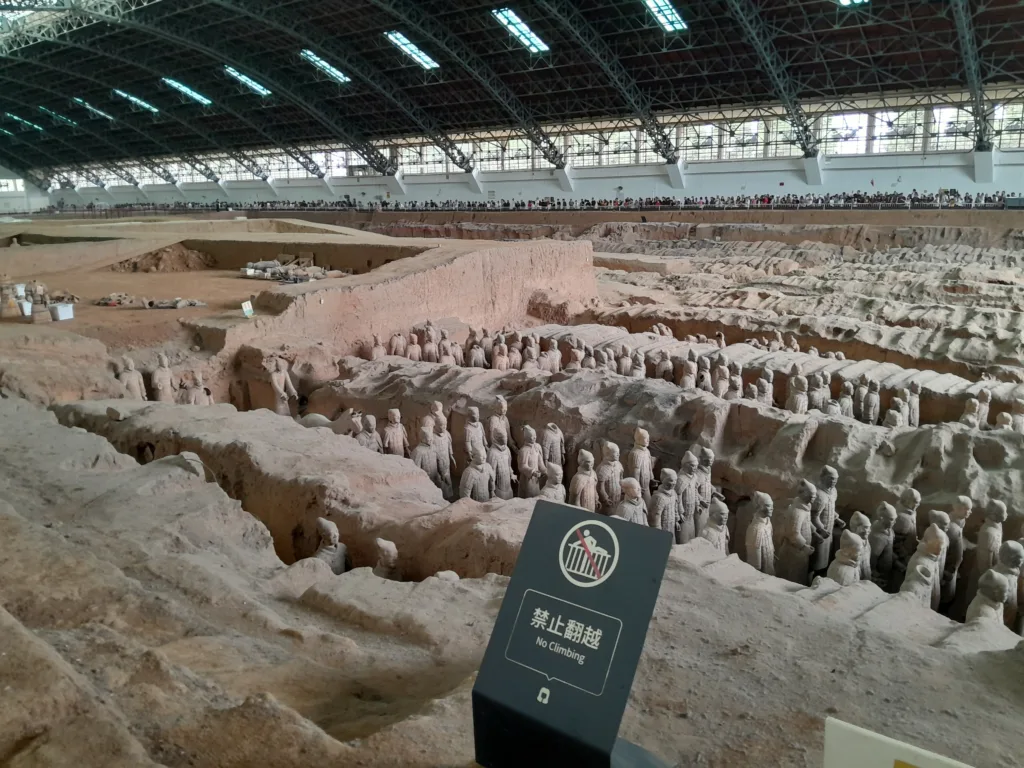

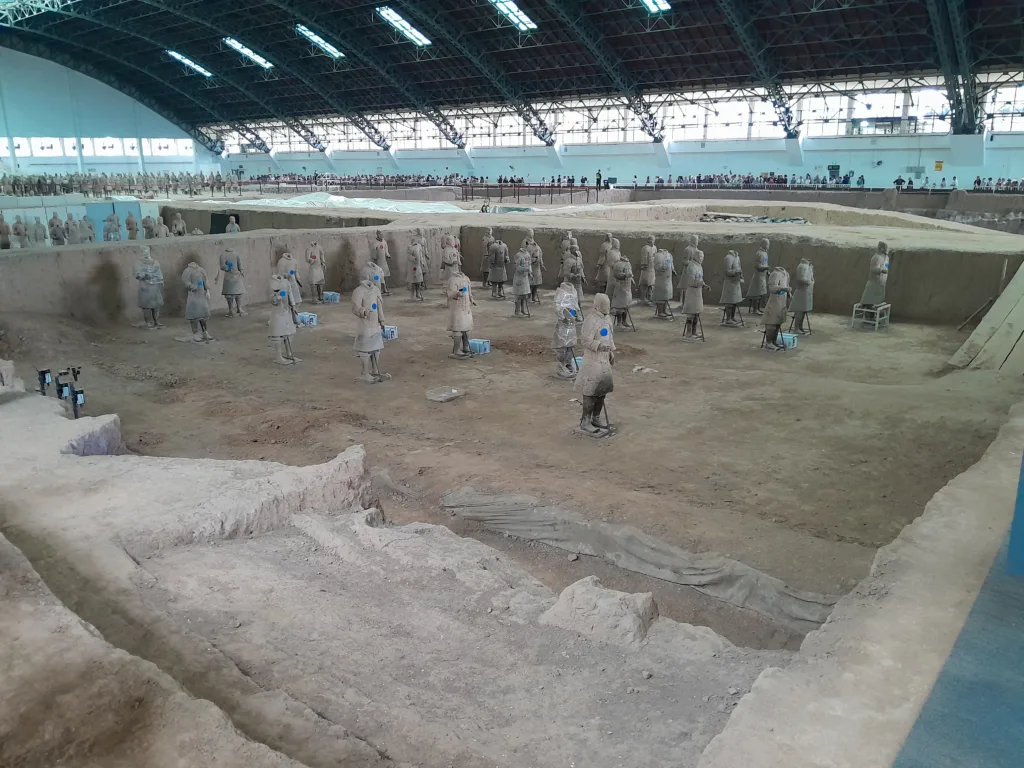
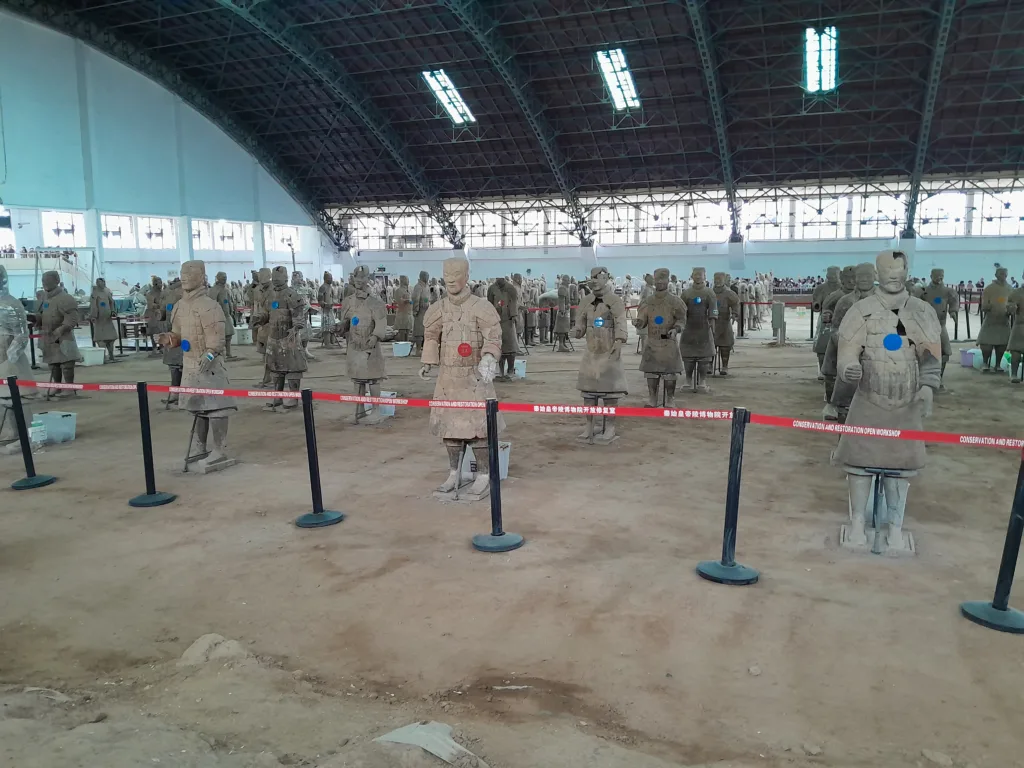
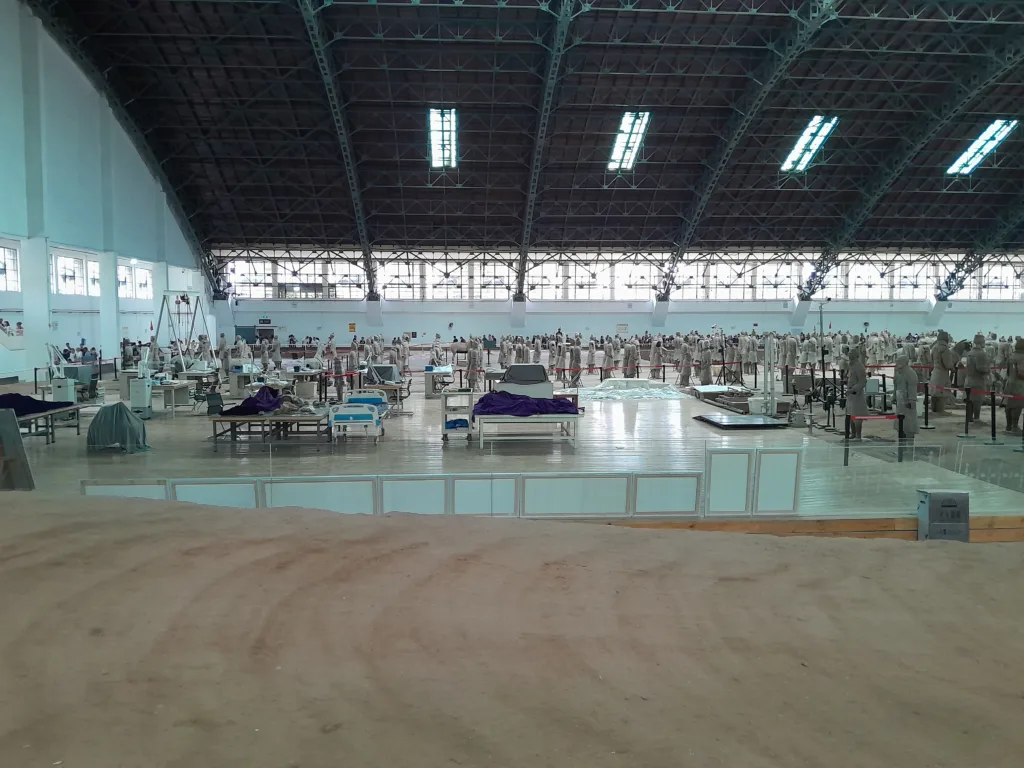
The main attraction are the three pits that have been excavated and set up for public viewing. Pit 1, the largest, displays an array of soldiers standing in line. They have been moved and provided with extra support to avoid any more damage, providing an indication of what they may have looked like when first built.
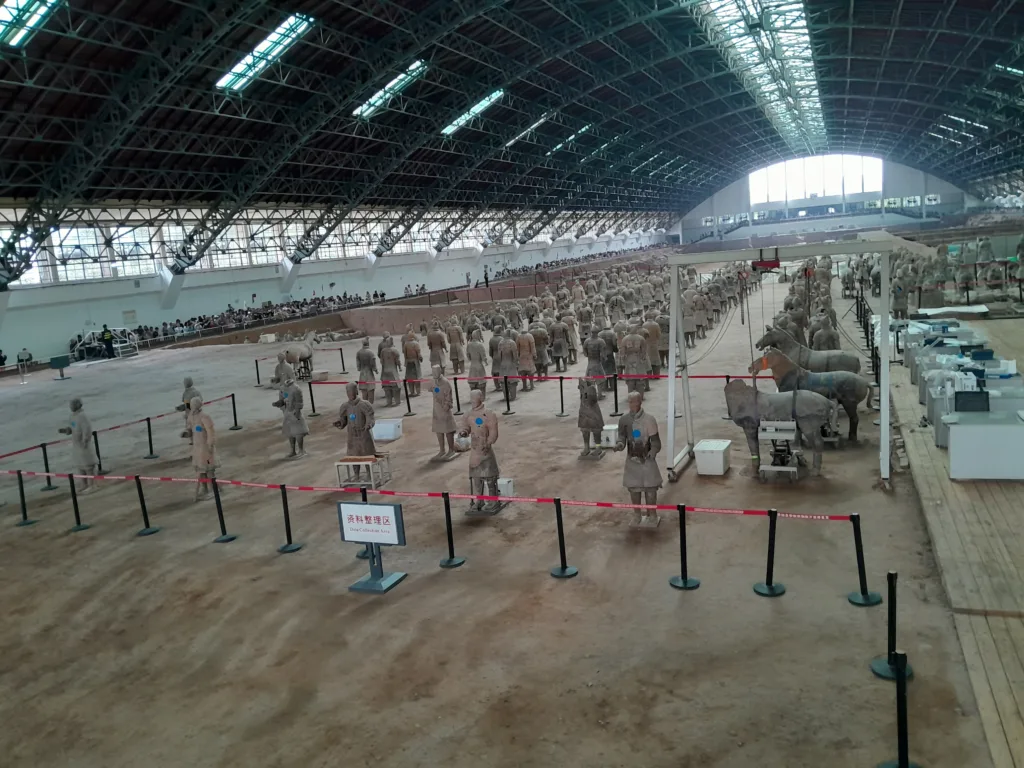
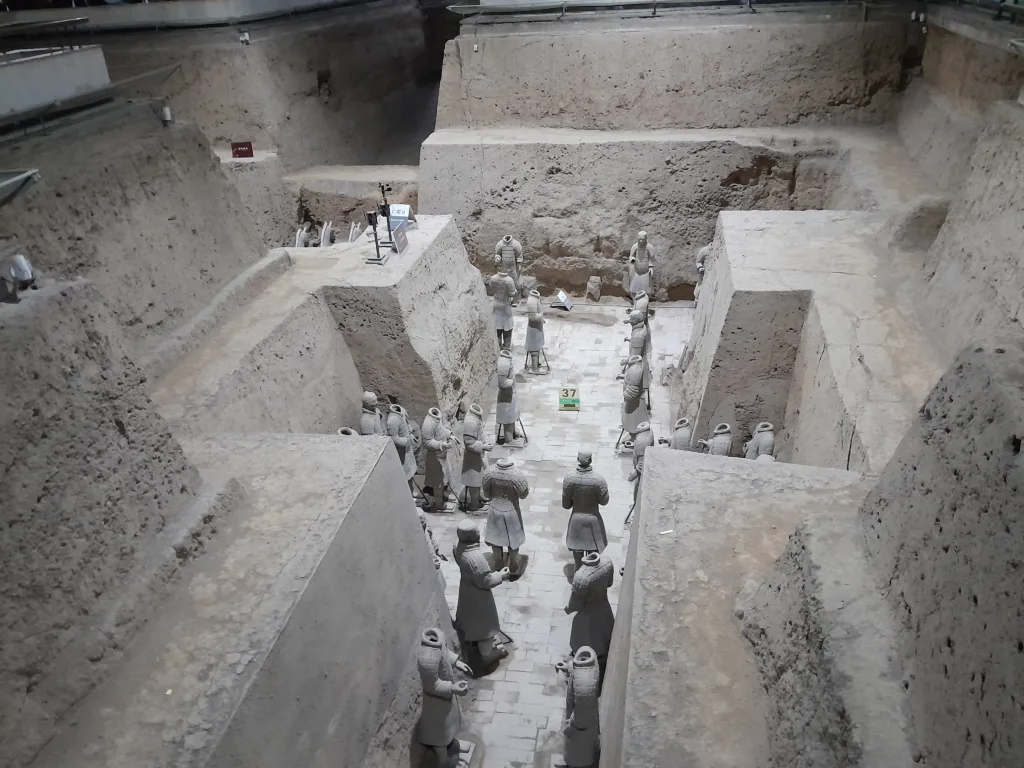
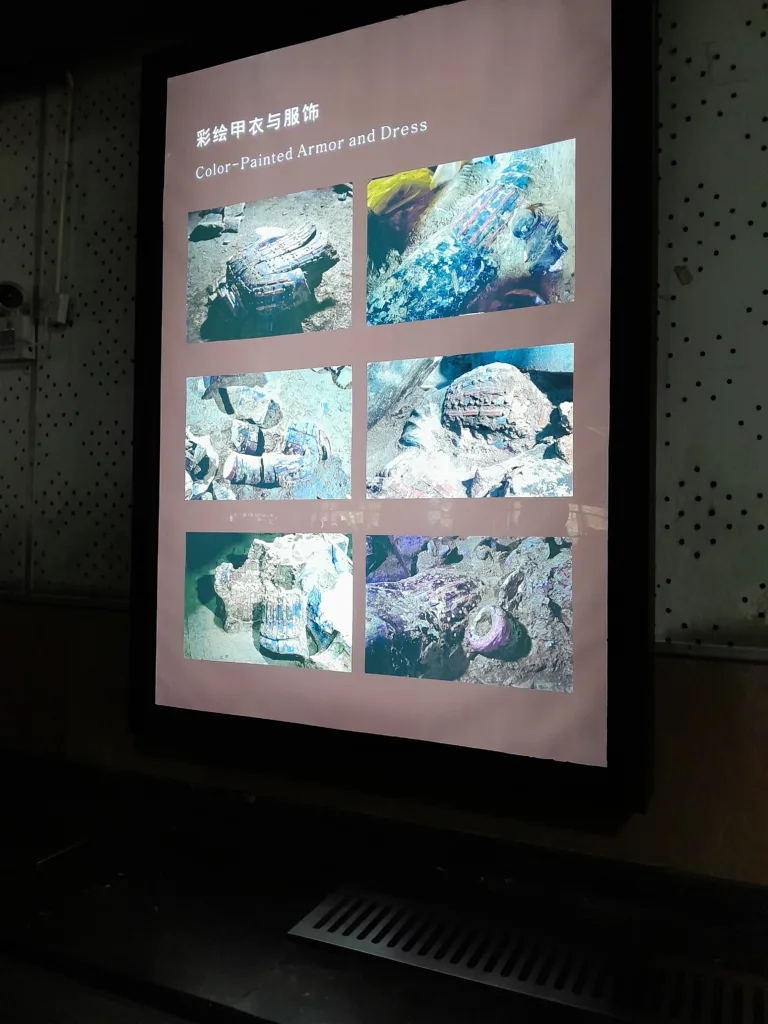
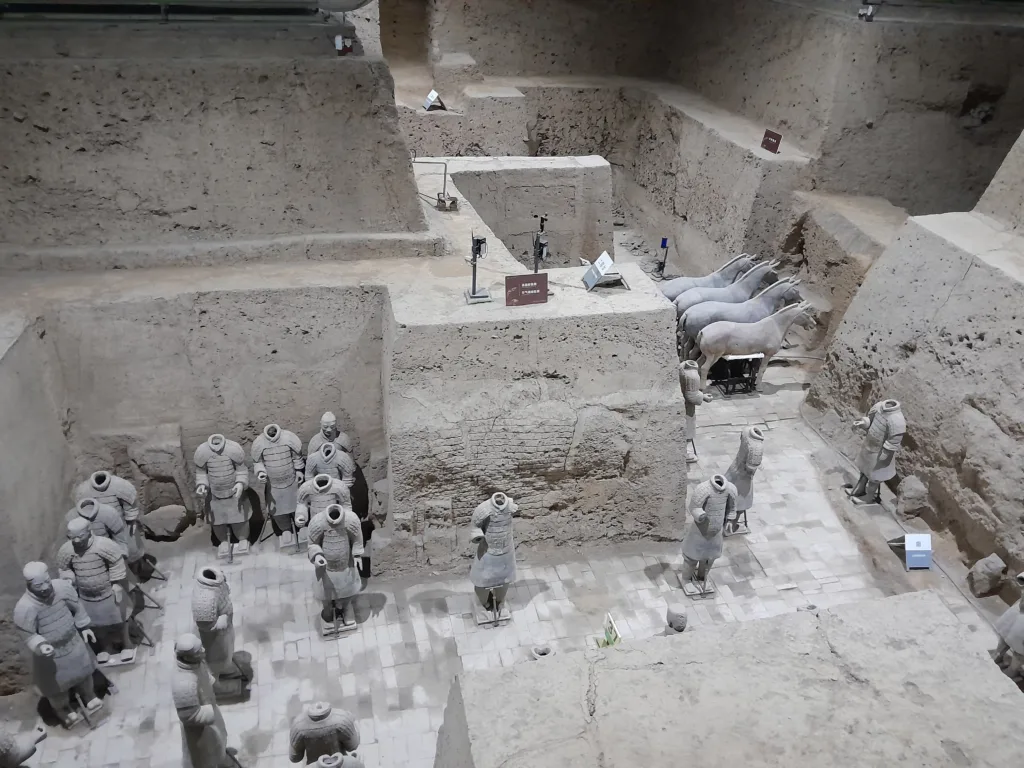

Further back in Pit 1, the display has been set up to show how it would have looked as they were excavating the statues. Many are smashed and broken, and of those that are mostly intact, many have lost their heads. Much work has been done to try and restore the statues and understand what they originally looked like. At the back of Pit 1 is an array of terracotta warriors that are presumably still being worked on.
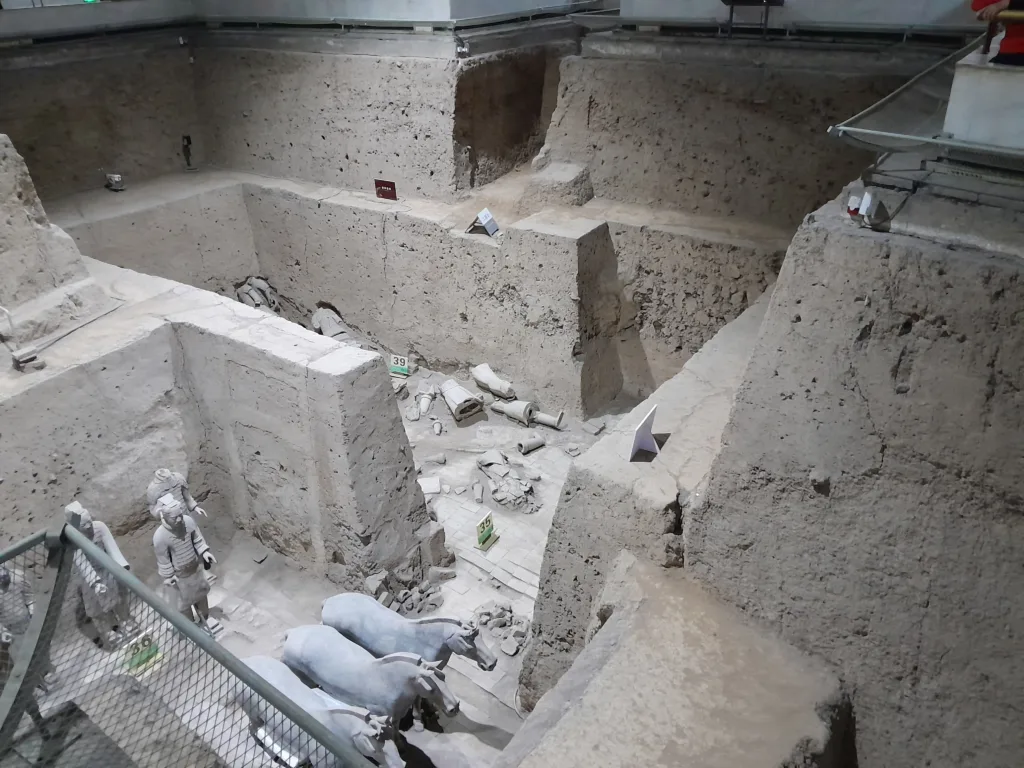

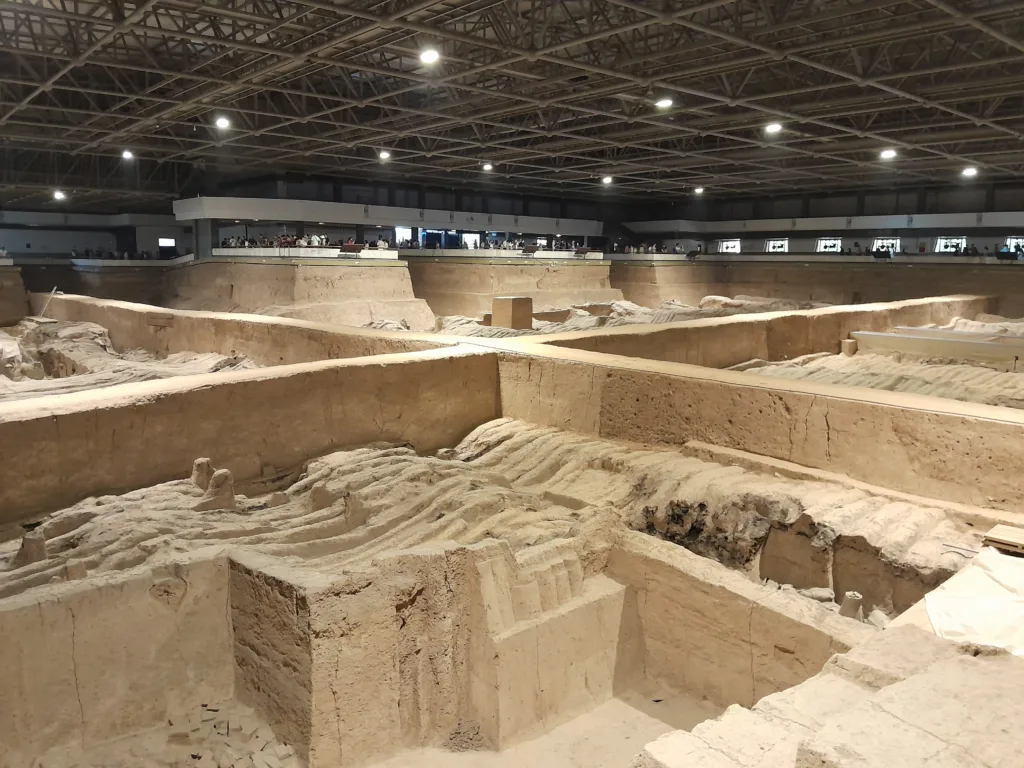
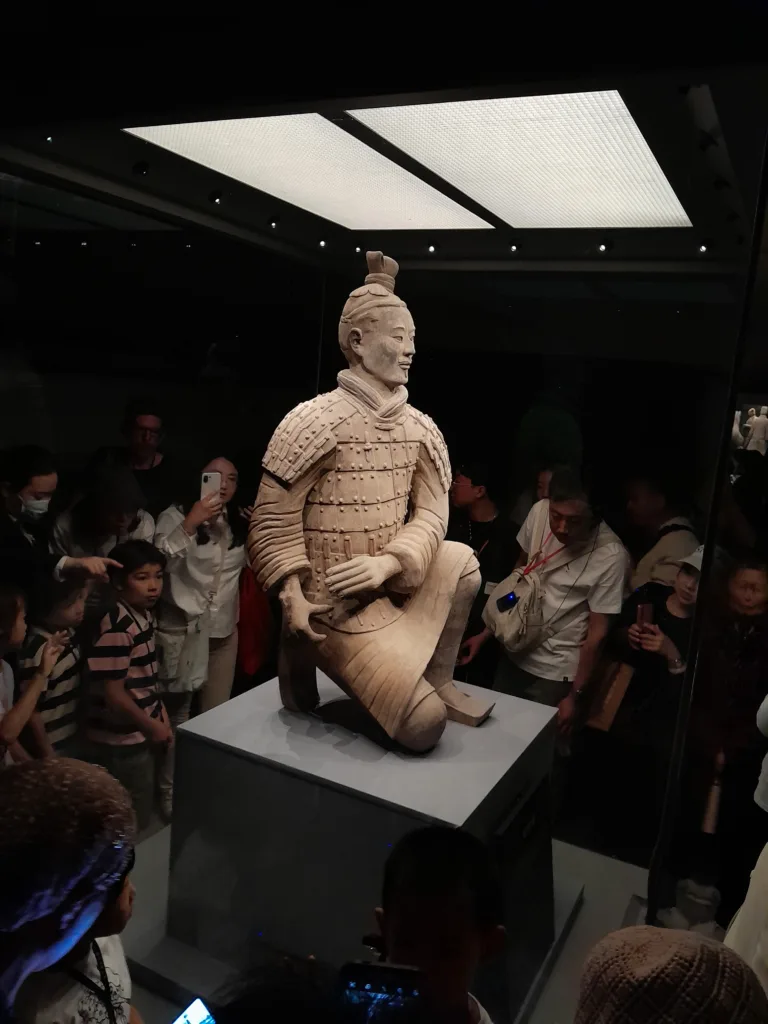
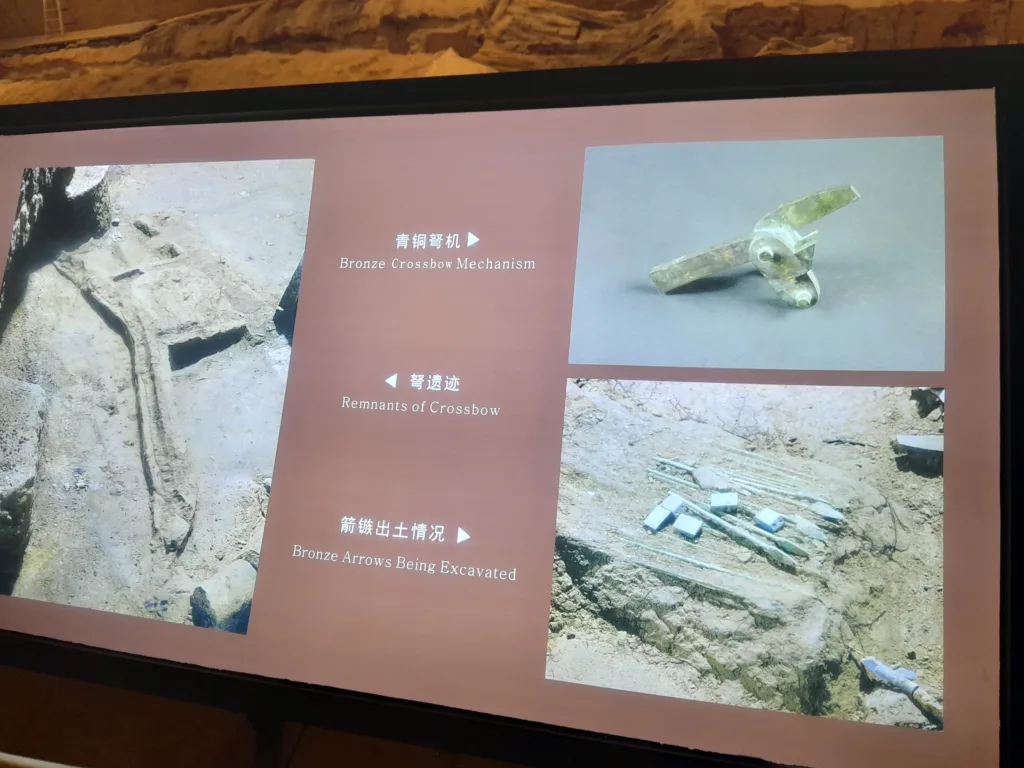
Pits 2 and 3 are smaller, and have some other figurines that include horses and chariots. These parts of the exhibit provide more information on the history of the site, including evidence that the army was originally painted. After centuries buried underground, the paint has all but disappeared. Pit 3 particularly focuses on how the figurines were originally buried, and how they were found when they were excavated.
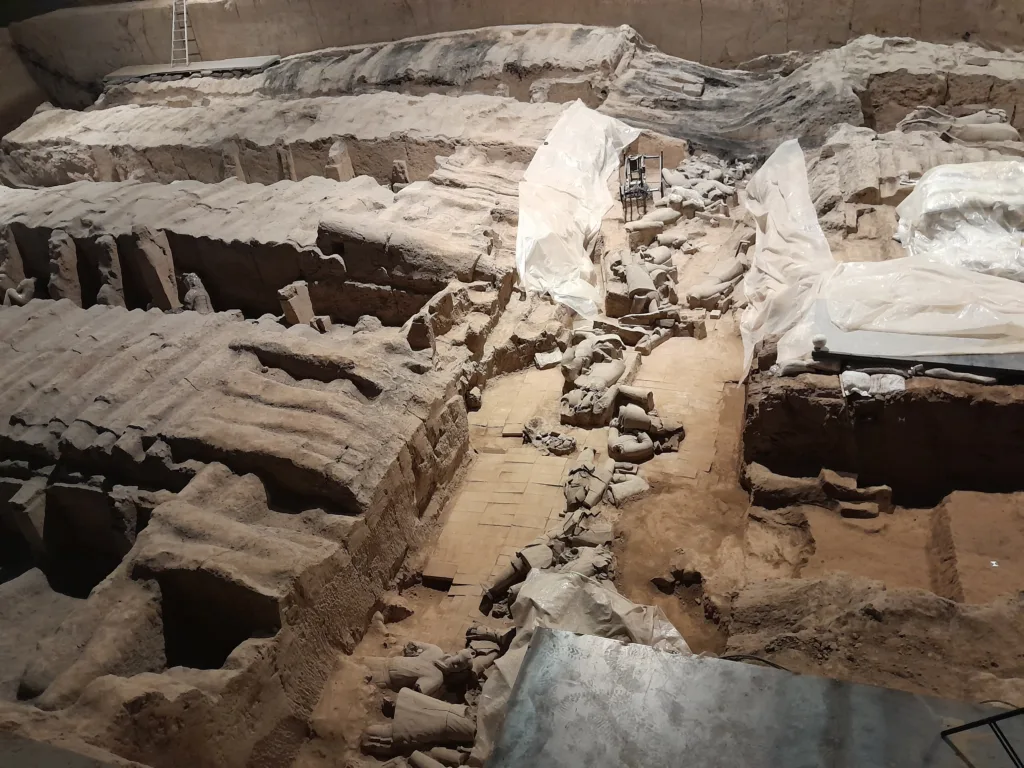
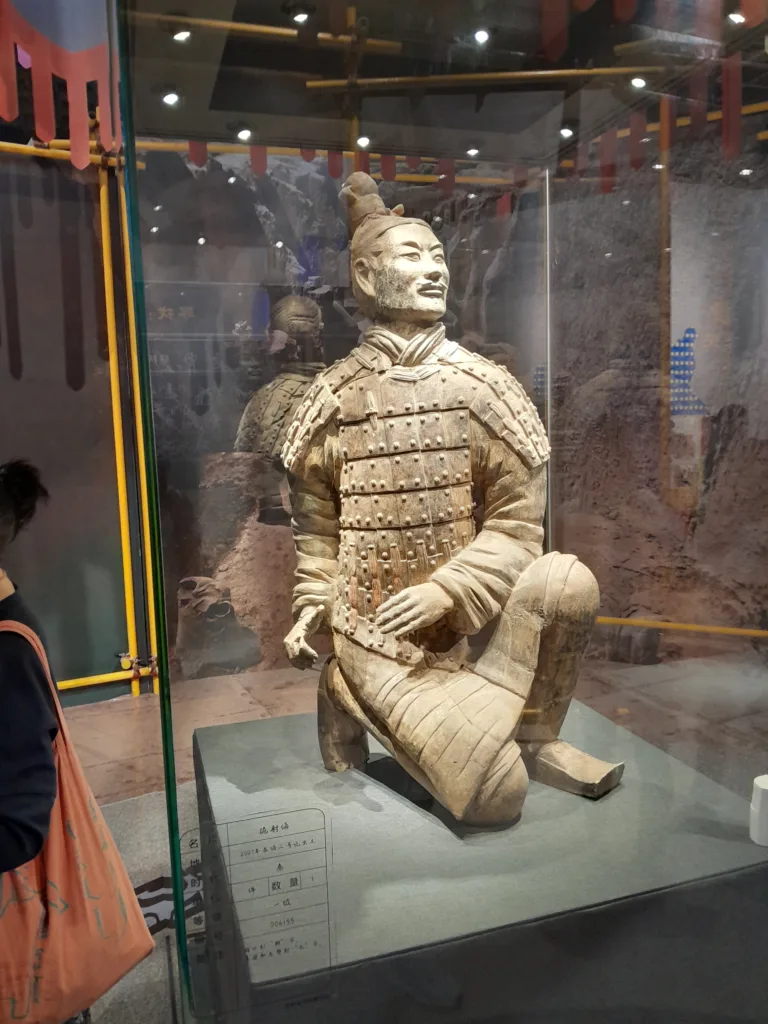
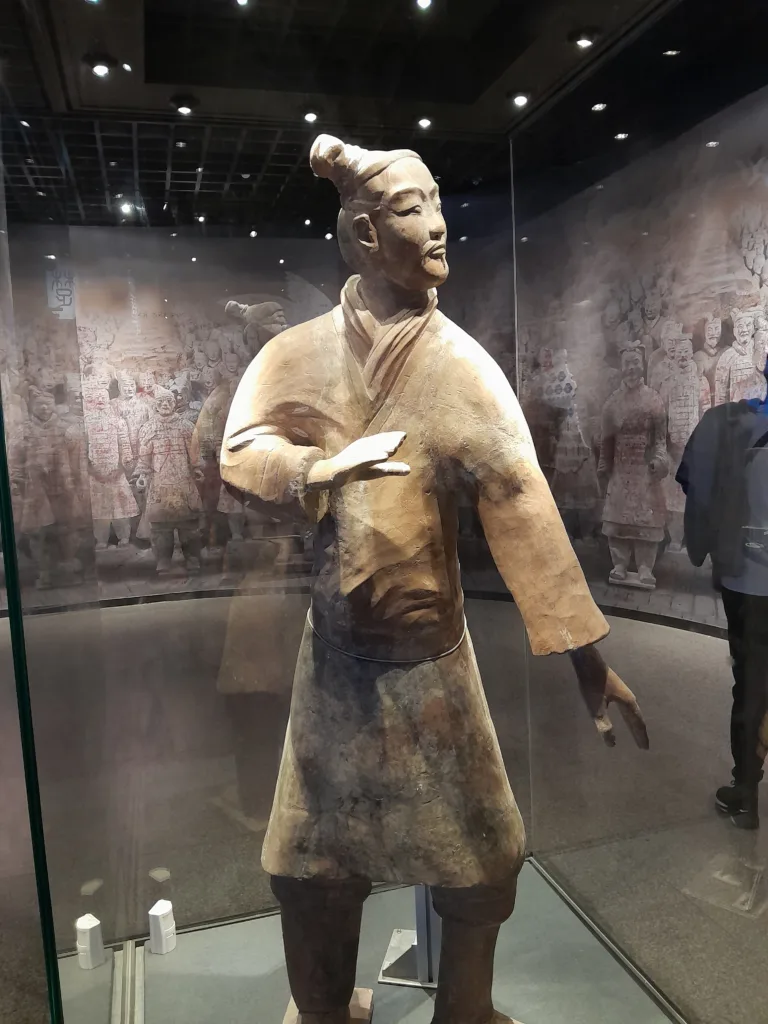
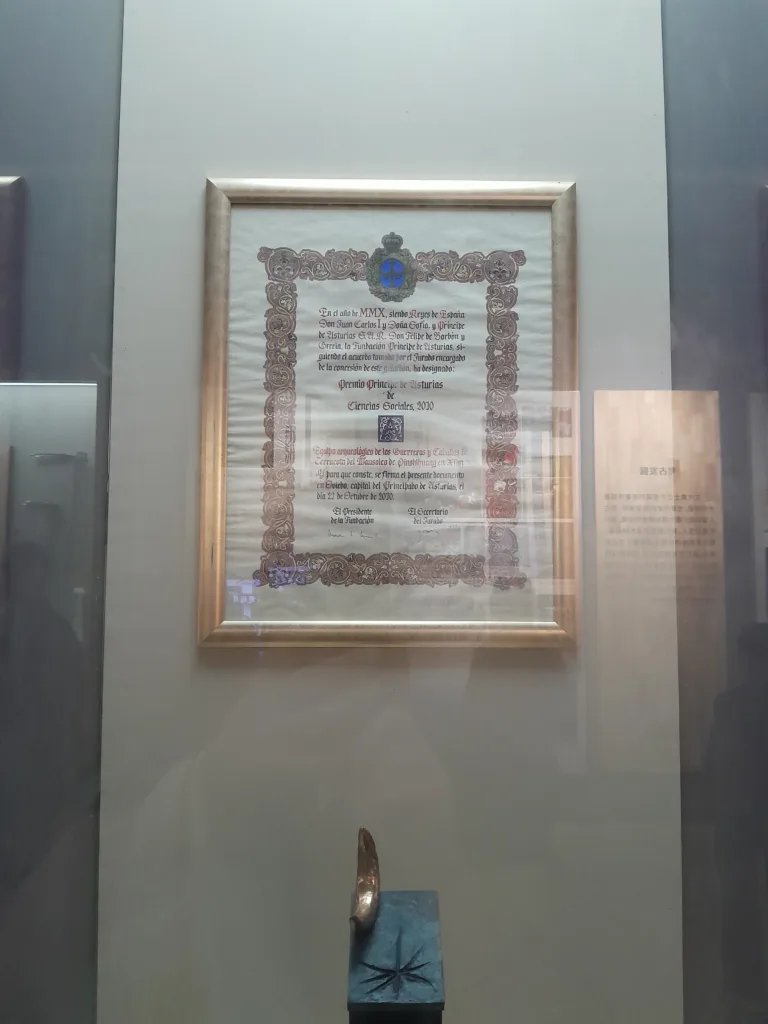
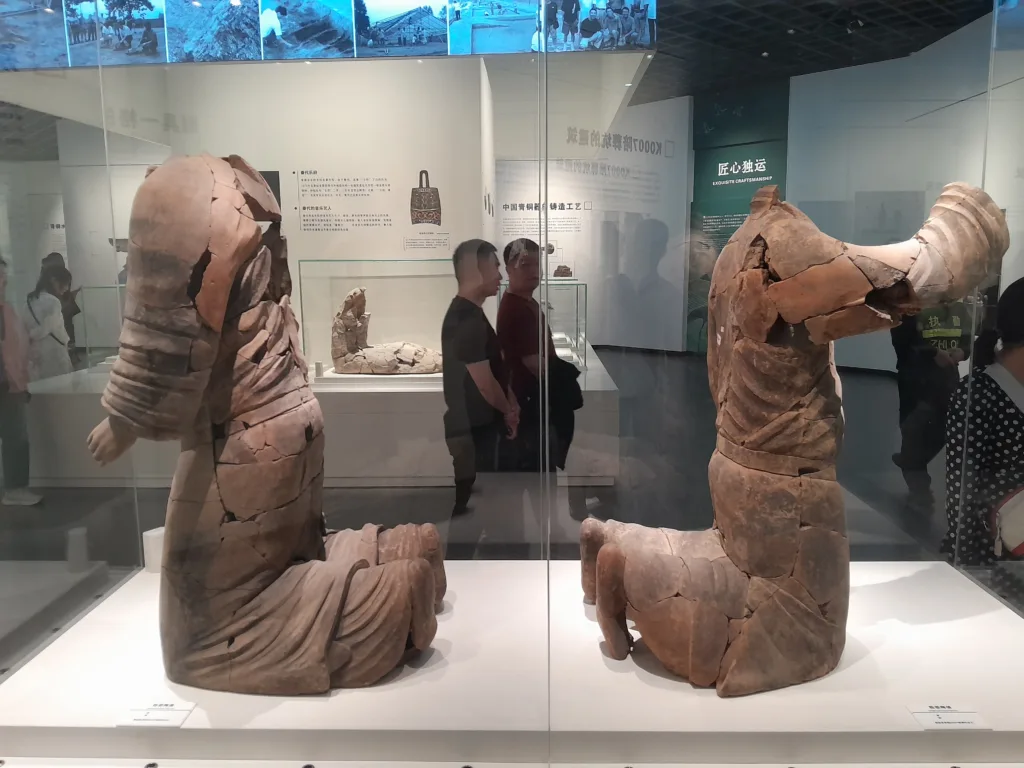
As well as the three pits, there is a museum that gives more context to the Army. It shows the history of Emperor Qin, the armour and uniforms his Army would wear, other things that had been discovered from the same area or time period. It’s mostly in Chinese, but you can still get a lot out of the displays here.
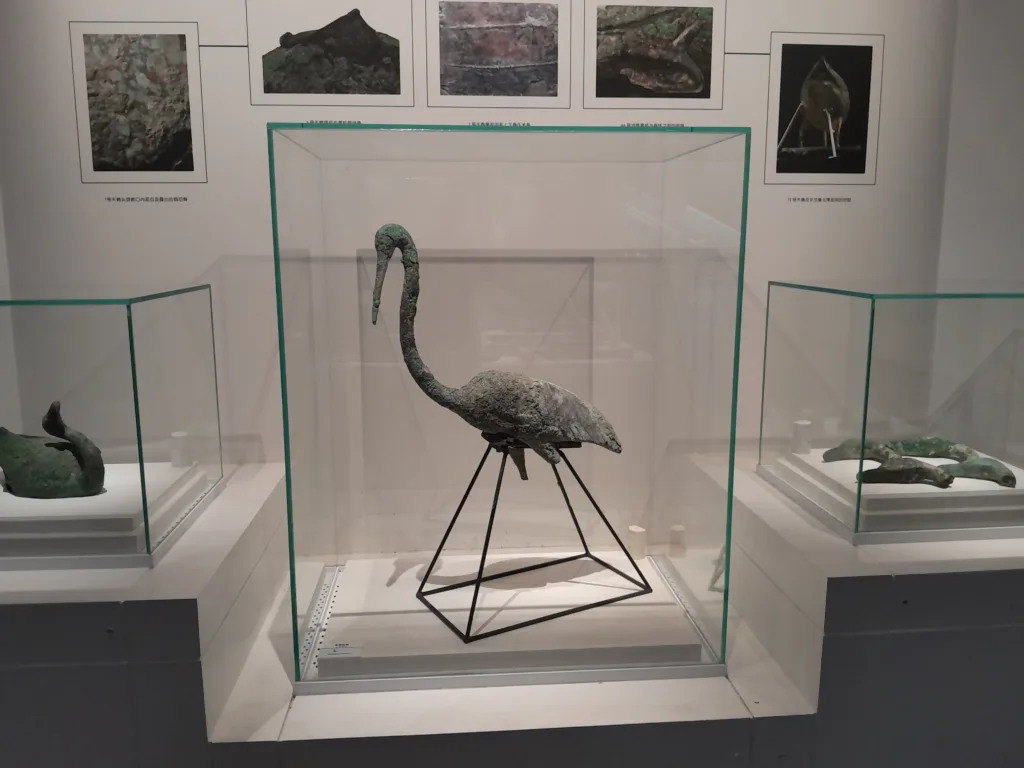
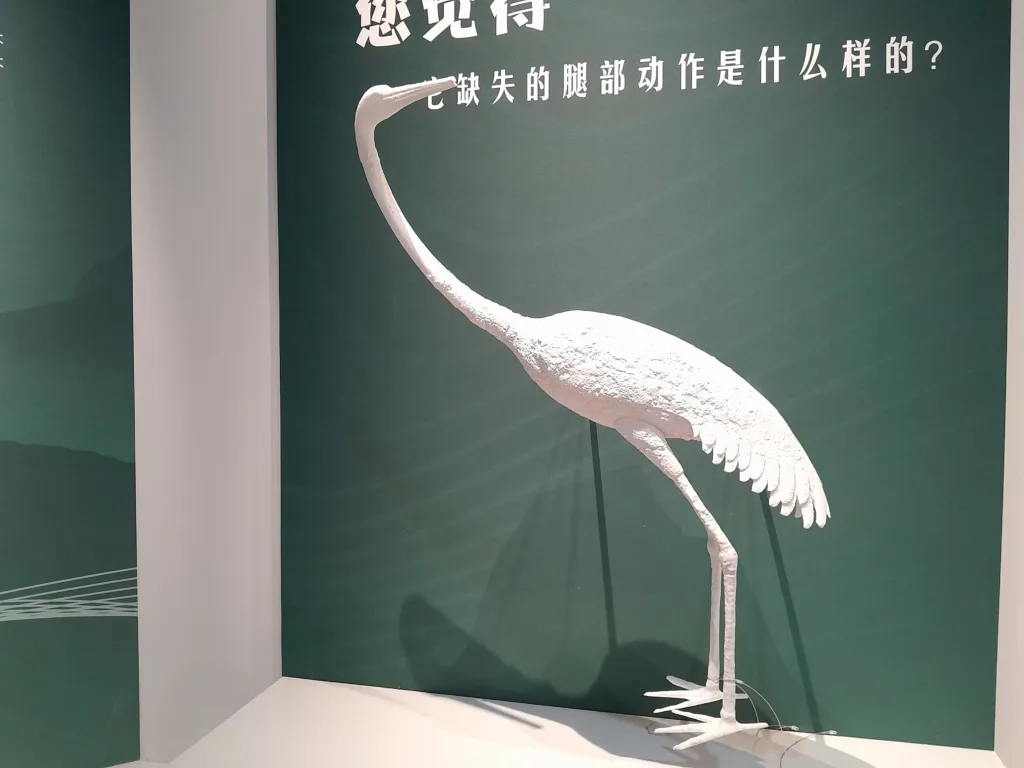
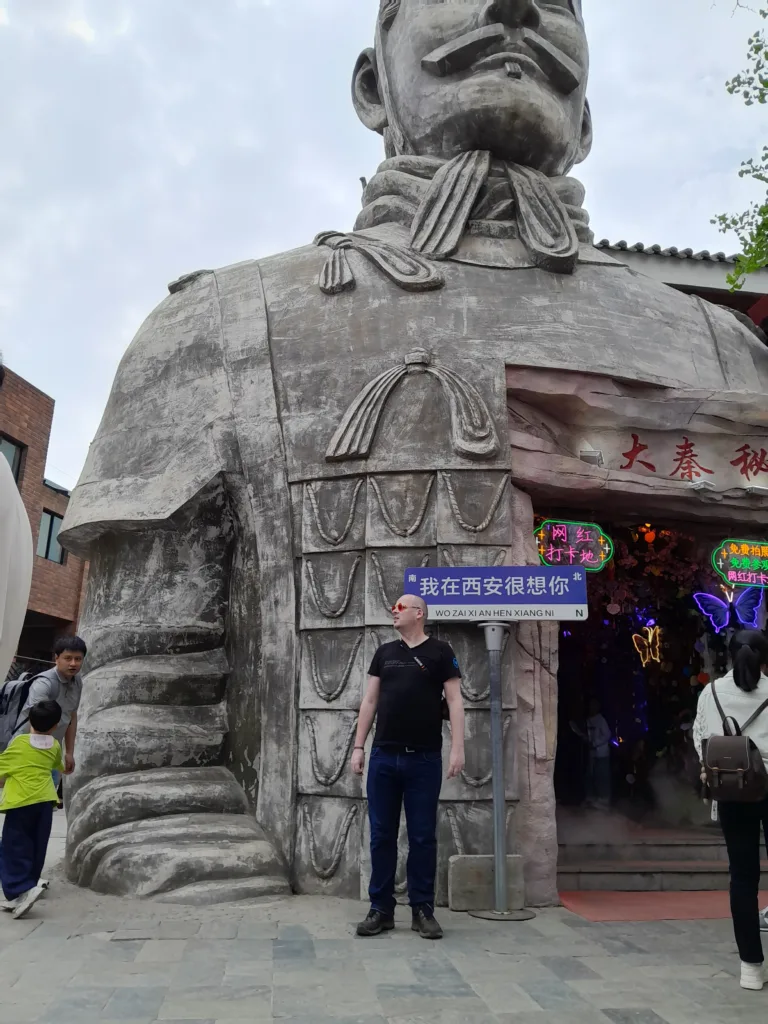
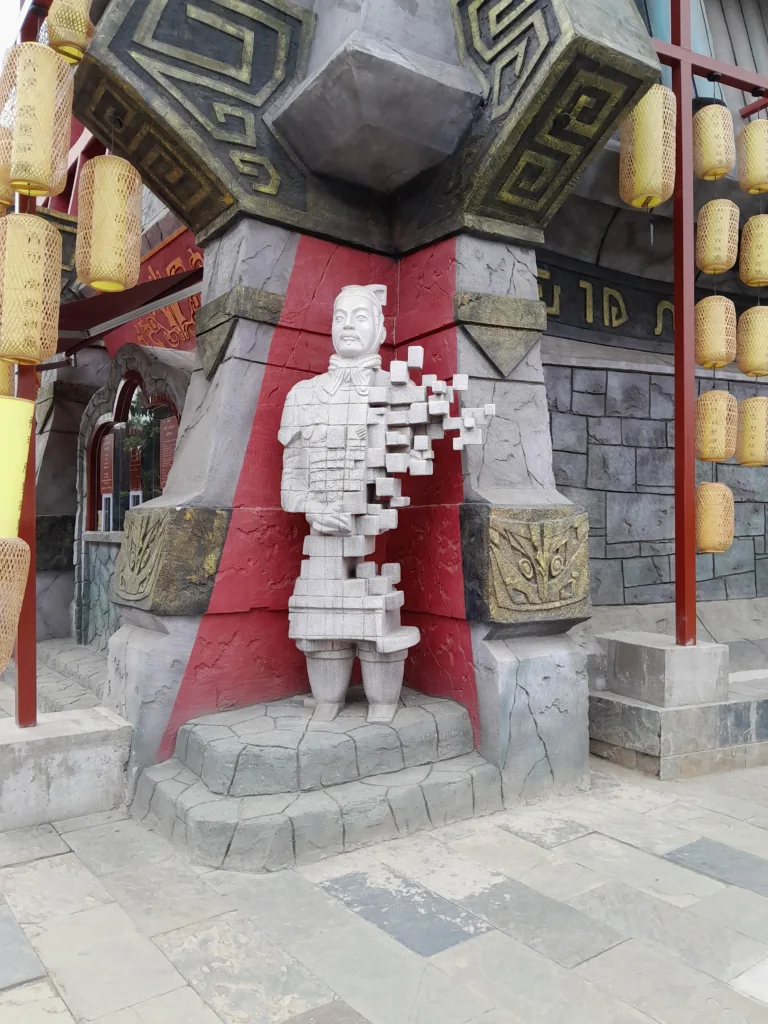

The ticket for the Terracotta Army comes with a ticket to the Mausoleum Gardens. This is the area where Emperor Qin was buried alongside even more Terracotta figurines. The gardens are mostly a park now, with a few areas of excavation that you can see around the area, including the wall that originally surrounded the mausoleum area.
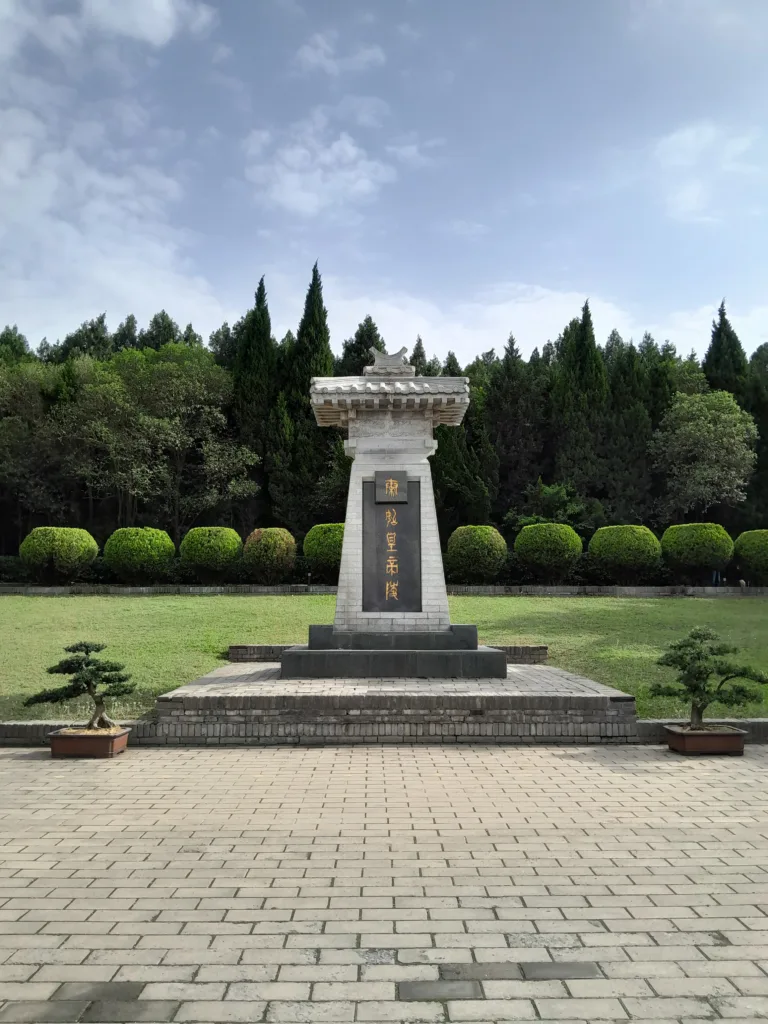
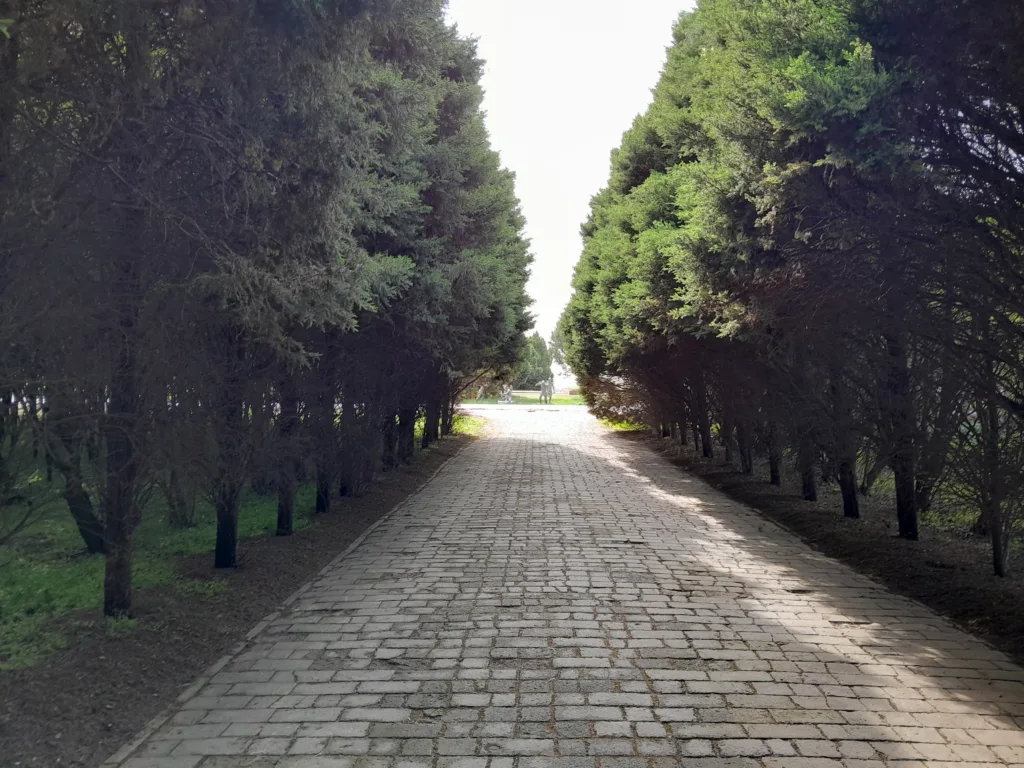
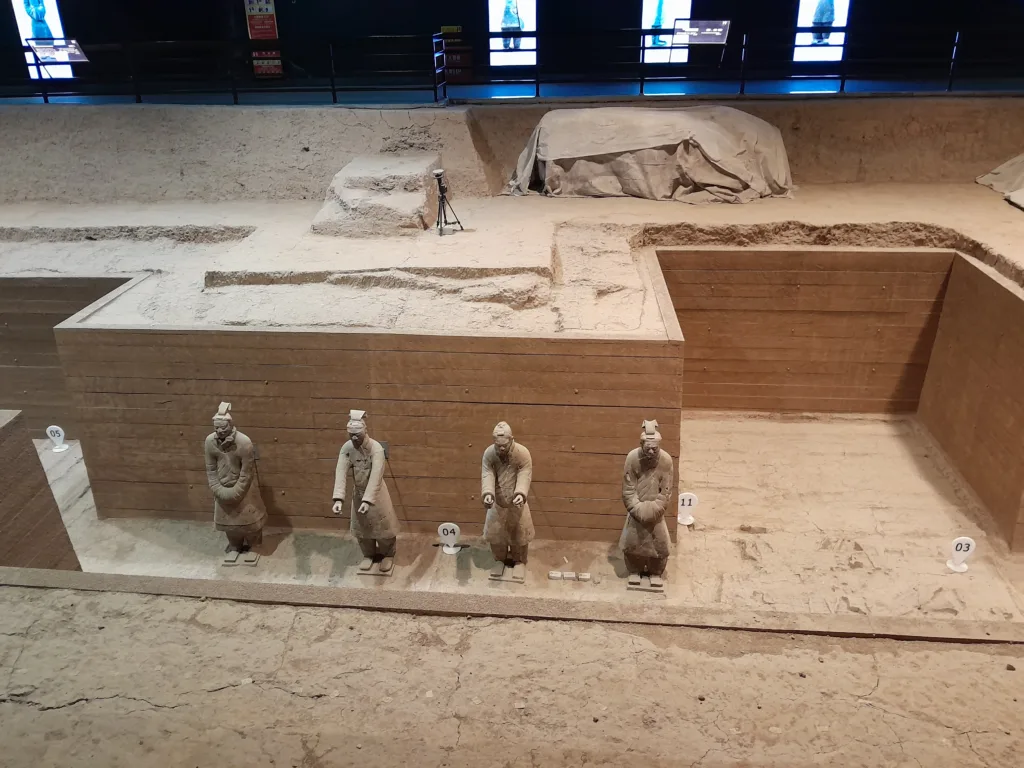
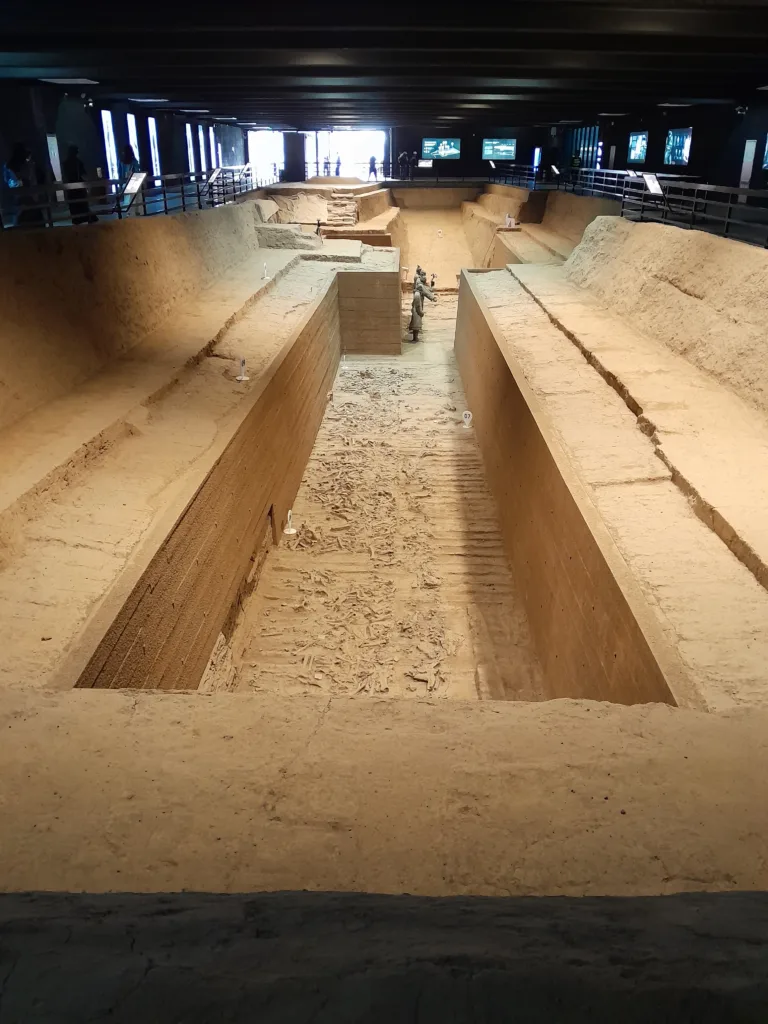
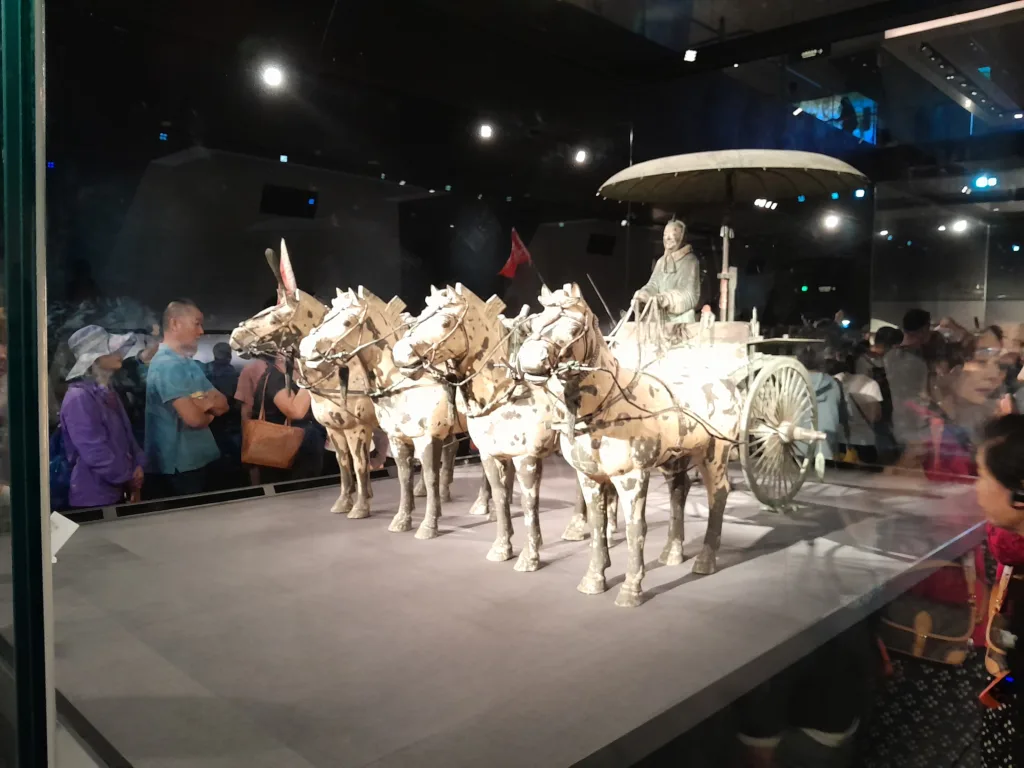
After exploring the gardens we were done in. It was time to head back to Xi’an and the hustle and bustle of city life.




One thought on “I Finally Saw the Terracotta Army”